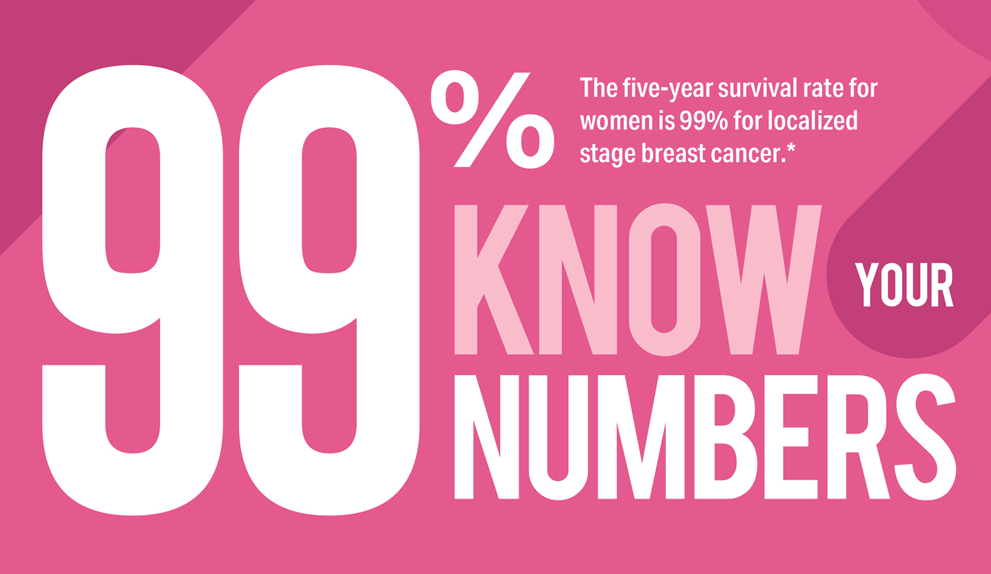Early detection improves survival rates, allows for less aggressive treatments, and enhances your quality of life. Take a few minutes to complete our online breast cancer risk assessment to better understand your opportunity to stay healthy and make proactive steps for you and your family’s future.


| Type of risk | Points | |
|---|---|---|
| Your age | Click box that applies | |
| 60+ | 15 | |
| 50-59 | 8 | |
| 40-49 | 3 | |
| 25-39 | 1 | |
| Family history (age of diagnosis) | ||
| Mother (under 50) | 20 | |
| Mother (over 50) | 12 | |
| Sister (under 50) | 20 | |
| Sister (over 50) | 12 | |
| More than one aunt, cousin, or grandmother | 5 | |
| One aunt, cousin, or grandmother | 3 | |
| Unknown | 0 | |
| Personal history | ||
| You have had a previous breast cancer | 25 | |
| You have had breast surgery showing atypia | 15 | |
| You have had multiple benign biopsies | 4 | |
| You have had a benign breast biopsy | 3 | |
| You have had a previous cancer of the ovary or uterus | 2 | |
| You have dense breast tissue | 4 | |
| Childbearing | ||
| You are 30 years old or older and have never had a child | 2 | |
| You had your first child at age 30 or older | 2 | |
| Menstrual history | ||
| Menstruation began at age 11 or younger | 2 | |
| Menopause occurred at 55 or older | 2 | |
| Menopause occurred between 46 and 54 | 1 | |
| Body build | ||
| You are overweight, with extra weight in the upper body (apple shape) | 2 | |
| You are overweight, with extra weight in the thighs and buttocks (pear shape) | 1 | |
| Diet | ||
| You eat a high-fat diet (fried foods, deli, meat, cheese) | 1 | |
| Post-menopausal hormones | ||
| You are presently taking or have taken female estrogen and progesterone (PREMPRO®) for more than 5 years | 2 | |
| You had natural menopause and have taken estrogen and progesterone (PREMPRO®) for more than 10 years | 3 | |
| Total score | ||
| Set up an appointment to discuss the score | ||
Your present risk of developing breast cancer may be estimated by comparing your total score to the chart below. However, this is only an approximate value, and if you develop any symptoms you should consult your doctor immediately.
0-10 |
Average Risk |
11-19 |
Moderate Risk |
20-29 |
High Risk |
30+ |
Highest Risk |
AVERAGE RISK:
Women at average risk need yearly mammography starting at age 40 (baseline at age 35), and yearly clinical breast exam.
MODERATE RISK:
See recommendations above. In addition, we recommend a clinical breast exam with a breast specialist, which should include a discussion of breast cancer prevention strategies.
HIGH RISK:
You need all of the above plus a thorough evaluation of your family history and possible genetic testing for genetic mutations. The benefits and risks of new drugs to reduce breast cancer risk should be reviewed. Increased surveillance with more frequent breast exams and advanced breast imaging tests (such as MRI) should be considered.
HIGHEST RISK:
Women at highest risk for breast cancer usually have a very strong family history of breast and ovarian cancer and can test positive for a genetic mutation. They need to avail themselves to all risk reduction strategies. These women should be under the care of a surgeon specializing in breast disease, who can oversee an intensive an individualized screening program.
